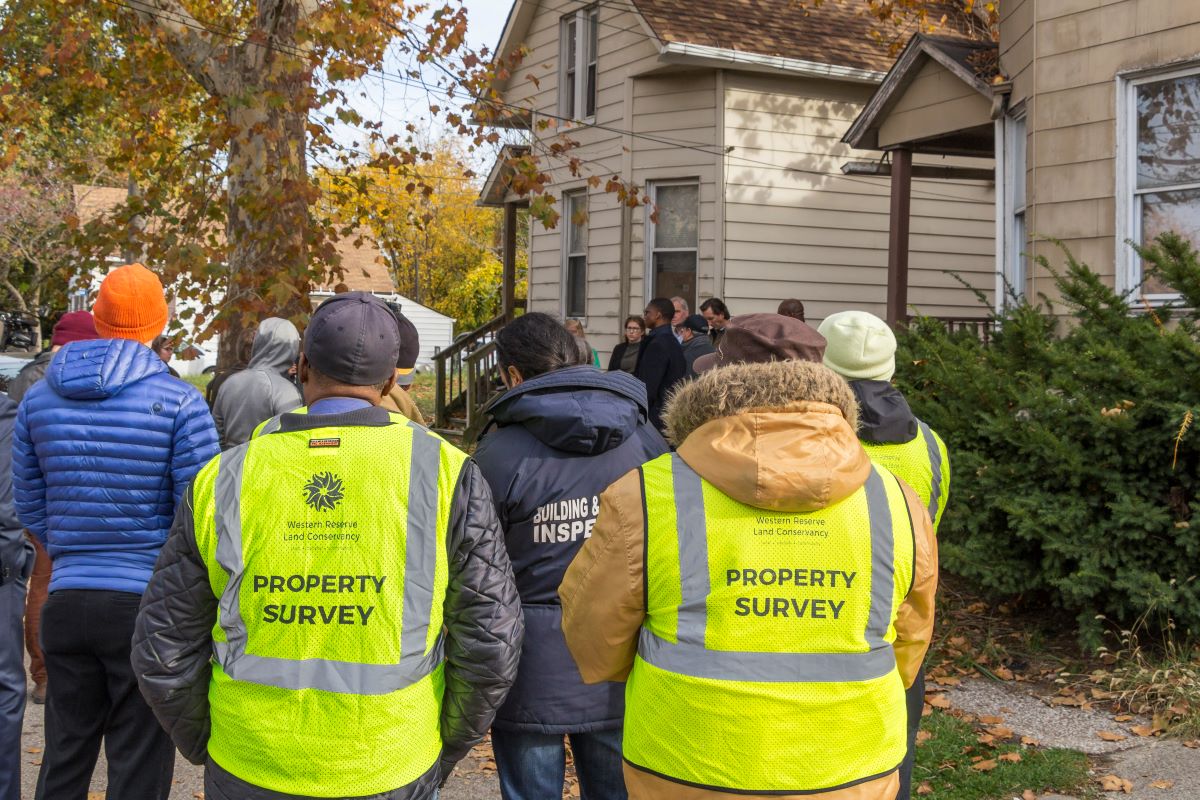

From October 2022 to April 2023, city staff from the Department of Building and Housing, the Mayor’s Office of Capital Projects, the Department of Community Development, and Healthy Homes Inspectors from local community development corporations (CDCs) recorded the current conditions of every parcel in Cleveland.
The survey was conducted from October 2022 to April 2023. In teams of two, 30 surveyors from the City of Cleveland used mobile devices to inventory tens of thousands of parcels throughout the city. Using baseline data from local sources such as existing city and county data, utilities, and the powerful database NEOCANDO from Case Western Reserve University, surveyors visually inspected properties to determine if a structure exists on the property, if a structure is occupied or vacant and/or abandoned, and then assess the property on an A to F scale.
Western Reserve Land Conservancy’s GIS Team created an Arc/GIS StoryMap to visualize the data from the 2023 Cleveland Property Inventory.
66.6% of structures in the City of Cleveland are occupied.
The number of vacant structures decreased from 8% in 2015 to 5.7% in 2023.
As a result of demolishing vacant structures, the proportion of vacant lots increased. 20.7% of Cleveland parcels are vacant lots.
94% of occupied structures are in the “A – Excellent” to “C – Fair” condition. This is a decrease from 98% in 2015.
52% of vacant structures are in “D – Deteriorated” to “F – Hazardous” condition. Less than 6% of occupied structures are “D – Deteriorated” or “F – Hazardous.”
While out-of-state owners only own 7% of parcels in Cleveland, they are not giving the same level of care to their properties as in-state owners. Out-of-state owners have fewer “A” and “B” properties, but more “C”, “D”, and “F” graded properties than in-state owners.
More than 80% of vacant lots in the city have no trees in the tree lawn.